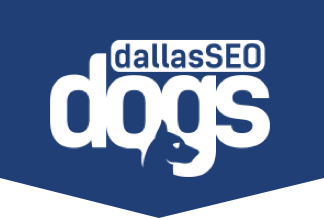Marketing Trends of 2025

As we near the end of 2025, the annual ritual of planning for the next year is in full swing for marketing directors and business owners. But before we can set our sights on 2026, it’s critical to take a full, analytical look at the year we’re leaving behind.
And what a year it’s been!
If 2024 was the year Generative AI exploded onto the scene, 2025 was the year it got a job. This year was defined by a massive, industry-wide acceleration. The marketing trends that dominated were not just theories; they were practical, in-the-trenches applications. We moved from “What is this?” to “How do we use this right now?”
As a digital marketing agency in Dallas, we haven’t just been watching these 2025 marketing trends; we’ve been implementing them, testing them, and separating the high-impact strategies from the short-lived hype. We’ve seen what drove real ROI for our clients and what turned out to be a “flash in the pan.”
In this comprehensive review, we’re going to break down the most popular 2025 marketing trends, analyze what worked and what didn’t, and then use those lessons to build a powerful, actionable plan for 2026.
Definitive 2025 Marketing Trends | What Worked and What Didn’t
This year wasn’t so much about revolutionary new platforms as it was about the revolutionary integration of intelligence into the platforms we already use. The overarching theme? “Radical Efficiency.”
We all had to do more with less, and technology was the answer. But, as many learned the hard way, technology without a human-centric strategy is just expensive noise. Here are the top marketing trends that defined the year.
AI and Automation | The Great Accelerator
In 2025, “AI” and “automation” became as fundamental to marketing as “email.”
- What Worked: The “Human-in-the-Loop” model. This year’s big winners used AI as a “creative co-pilot,” not a replacement for human talent. We saw massive success using AI to brainstorm 50 ad copy variations in minutes, write first drafts of blog posts (which our expert writers then refined), and generate schema markup for SEO. Automation tools became incredibly sophisticated, allowing for hyper-personalized email sequences triggered by user behavior, not just a simple timeline.
- What Didn’t: The “set it and forget it” AI content farm. Many brands, eager for a shortcut, used AI to pump out hundreds of generic, low-quality blog posts. By mid-2025, it was clear this was a failing strategy. Google’s algorithms, and more importantly, real human users, prioritized content that demonstrated E-E-A-T (Experience, Expertise, Authoritativeness, and Trustworthiness) — something a machine alone cannot provide.
Predictive Analytics | From Reactive to Proactive
This was one of the top marketing trends that quietly changed the game for B2B and e-commerce. Instead of just reporting on what happened, we started accurately predicting what would happen next.
- What Worked: Predictive lead scoring. We helped our clients integrate systems that analyzed past customer data to assign a “conversion-likelihood” score to new leads. This allowed sales teams to focus their energy on the leads that mattered most. For e-commerce, predictive analytics identified customers at high risk of “churning” (leaving), allowing brands to proactively send targeted offers to keep them.
- What Didn’t: Relying on “black box” models. Some tools made predictions without explaining why. This left marketing directors in the dark. The models that worked were transparent, allowing us to see which behaviors (e.g., “visited pricing page 3x” or “downloaded whitepaper”) were the strongest predictors of success.
Social Media | The Rise of Authentic, Long-Form Video
While short-form video (Reels, Shorts, TikTok) remained the undisputed king of discovery, 2025 saw a powerful counter-movement.
- What Worked: Building trust with depth. Audiences, fatigued by endless 15-second clips, flocked to brands that offered genuine value in longer formats. We saw incredible engagement from “behind-the-scenes” content, deep-dive tutorials on YouTube, and multi-part educational series. Authenticity and a strong personal brand (even for a company) beat high-gloss, sterile production value every time.
- What Didn’t: Pushing sales on social. Brands that continued to use social media as a one-way billboard were tuned out. 2025 hammered home the lesson that these platforms are for “social” engagement. We had to start conversations, not just broadcast commercials.
Influencers | The Pivot to Micro-Influencers and Experts
The “mega-influencer” bubble continued to deflate in 2025. Audiences grew skeptical of multi-million-follower celebrities promoting a new product every day.
- What Worked: Niche trust. The real ROI was found with micro-influencers (5,000-50,000 followers) and expert-influencers. These are creators with smaller, but hyper-engaged, niche audiences. We found that a partnership with a trusted local Dallas food blogger, for example, drove more real foot traffic for a restaurant client than a national “foodie” ever could. The key was long-term partnerships, not one-off posts.
- What Didn’t: Inauthentic “cash grabs.” Users can spot a post that an influencer was clearly just paid to share. Any collaboration that didn’t feel 100% aligned with the creator’s personal brand failed to deliver results and often led to negative comments.
Data Privacy and Ethical Marketing Practices
The “post-cookie” world fully arrived, and the marketing trends shifted from “how do we track users?” to “how do we earn their trust?”
- What Worked: A focus on zero-party and first-party data. Ethical Marketing Practices became a major differentiator. The smartest brands in 2025 invested heavily in their owned assets. This meant:
- Zero-Party Data: Information users gave willingly via quizzes, surveys, and preference centers.
- First-Party Data: Information you collected directly on your own site (e.g., website behavior, purchase history).
- Brands that were transparent in their data collection and made it easy for users to opt-in (and out) built a level of customer loyalty that trackers could never buy.
- What Didn’t: Scrambling for “cookie alternatives” that were just as invasive. Customers are more educated on privacy than ever. Any brand perceived as trying to find a “loophole” to track them faced a serious backlash, damaging their reputation.
Paid Ads | The Squeeze and the Smart Response
There’s no sugarcoating it: paid ads got expensive in 2025. Rising costs on Google and Meta (Facebook/Instagram) meant we couldn’t just “buy” our way to growth.
- What Worked: A fully integrated, full-funnel strategy. The most successful 2025 marketing trends involved breaking down the silos between paid and organic. Our best-performing campaigns combined:
- PPC (Paid Ads): To capture users with high-intent searches.
- SEO (Organic): To provide valuable, long-form content that supported the ad’s promise.
- SMM (Social): To retarget users with social proof (testimonials, case studies) after they visited the site.
- AI-powered creative optimization also became essential, allowing us to test hundreds of ad variations to find the perfect combination of image and copy.
- What Didn’t: Siloed budgets. Any client who just “threw money” at Google Ads without a strong, high-converting landing page, a solid SEO content strategy, or a retargeting plan saw diminishing returns.
Beyond the Hype | How to Prepare Your Marketing Trends Strategy for 2026
The 2025 marketing trends taught us a powerful lesson: technology is the accelerator, but a human-centric, trust-based strategy is the engine.
As we look at the marketing trends on the horizon for 2026, the focus must be on consolidation, authenticity, and owning your audience. Here is your 4-step plan.
1. Double Down on E-E-A-T and “Human-in-the-Loop” AI
2026 will be the year of “Human-in-the-Loop.” The internet is now flooded with generic AI content. Your single greatest competitive advantage is your team’s real, human experience.
Your 2026 Action Plan: Use AI for what it’s good at—data analysis, first drafts, and idea generation. Then, empower your human experts to provide the final 20%—the unique insights, the personal stories, and the brand voice that AI cannot replicate. Your 2026 content strategy must be built around proving your E-E-A-T (Experience, Expertise, Authoritativeness, Trustworthiness) to both Google and your users.
2. Build Your First-Party Data “Fortress”
If your 2025 strategy was still reliant on third-party data, 2026 is the year to declare an emergency. You must own your audience.
Your 2026 Action Plan: Shift your budget and focus toward building your email and SMS lists. This means investing in high-value “lead magnets”—webinars, in-depth whitepapers, free tools, and exclusive newsletters. Your email list is your most valuable asset, a direct line to your customers that no algorithm change or privacy law can take away.
3. Integrate, Don’t Isolate, Your Channels
The day of running “an SEO campaign” or “a PPC campaign” in a silo is over. Your customer doesn’t see your brand in channels; they see one brand.
Your 2026 Action Plan: Plan your customer’s journey, not just a single touchpoint. How does your SEO blog post answer a question a user has before they’re ready to buy? How does your PPC ad capture them when they are ready? How does your social media reassure them after a purchase? Your 2026 budget should be planned by customer-journey-stage, not by marketing channel.
4. Invest in Your Brand’s Voice
In a sea of AI-driven automation, a memorable brand voice is your lighthouse.
Your 2026 Action Plan: Ask yourself, “If our logo was removed, would anyone know this content is from us?” If the answer is no, you have your primary goal for 2026. Define your voice. Is it witty? Authoritative? Empathetic? This voice should be consistent across your website, your ads, your social media, and even your automated email responses.
Take Your Next Step to a Successful 2026
What a year 2025 has been. It was a whirlwind of acceleration, driven by Artificial Intelligence finally becoming a practical tool in our daily marketing toolkits. We saw that the brands who won were not the ones who just adopted new tech, but the ones who used it to become more human, more trustworthy, and more valuable to their customers.
The top marketing trends all pointed in one direction: the future is not about “man vs. machine.” It’s about “man with machine.” The brands that will dominate in 2026 are those that master this partnership, using technology to scale their operations while using their human expertise to build real relationships.
Feeling overwhelmed by the pace of change? You don’t have to build your 2026 strategy alone.
At Dallas SEO Dogs, our entire team is built to manage your complete, integrated strategy. We’re not just an “SEO company” or a “PPC agency.” We are your comprehensive digital marketing partner. We handle the data-driven SEO, the high-ROI paid advertising, the brand-building content writing, and the secure, high-performance web design that ties it all together.
Let’s turn the marketing trends of 2026 into your business’s most profitable year yet.
Frequently Asked Questions (FAQ)
Q. What were the most important 2025 marketing trends for small businesses?
For small businesses, the top trends were (1) Using generative AI efficiently to brainstorm social media calendars and blog post outlines, saving valuable time; (2) Focusing on local SEO and Google Business Profile optimization to capture high-intent local customers; and (3) Leveraging micro-influencers in their community to build authentic trust.
Q. How did AI change the top marketing trends in 2025?
AI acted as a massive accelerator. It transformed top marketing trends by automating the “first draft” of content creation, enabling deep personalization in email marketing at a scale previously impossible, and providing predictive analytics for ad targeting, which helped make ad spend more efficient.
Q. What is the best way to prepare my marketing for 2026?
Start by auditing your 2025 performance to see what worked. Then, focus on three key areas: (1) Building your first-party data (your email list) so you own your audience; (2) Creating a content strategy that highlights your human expertise (E-E-A-T) to stand out from AI content; and (3) Integrating all your marketing channels (SEO, PPC, Social) so they work together on a single, unified customer journey.
